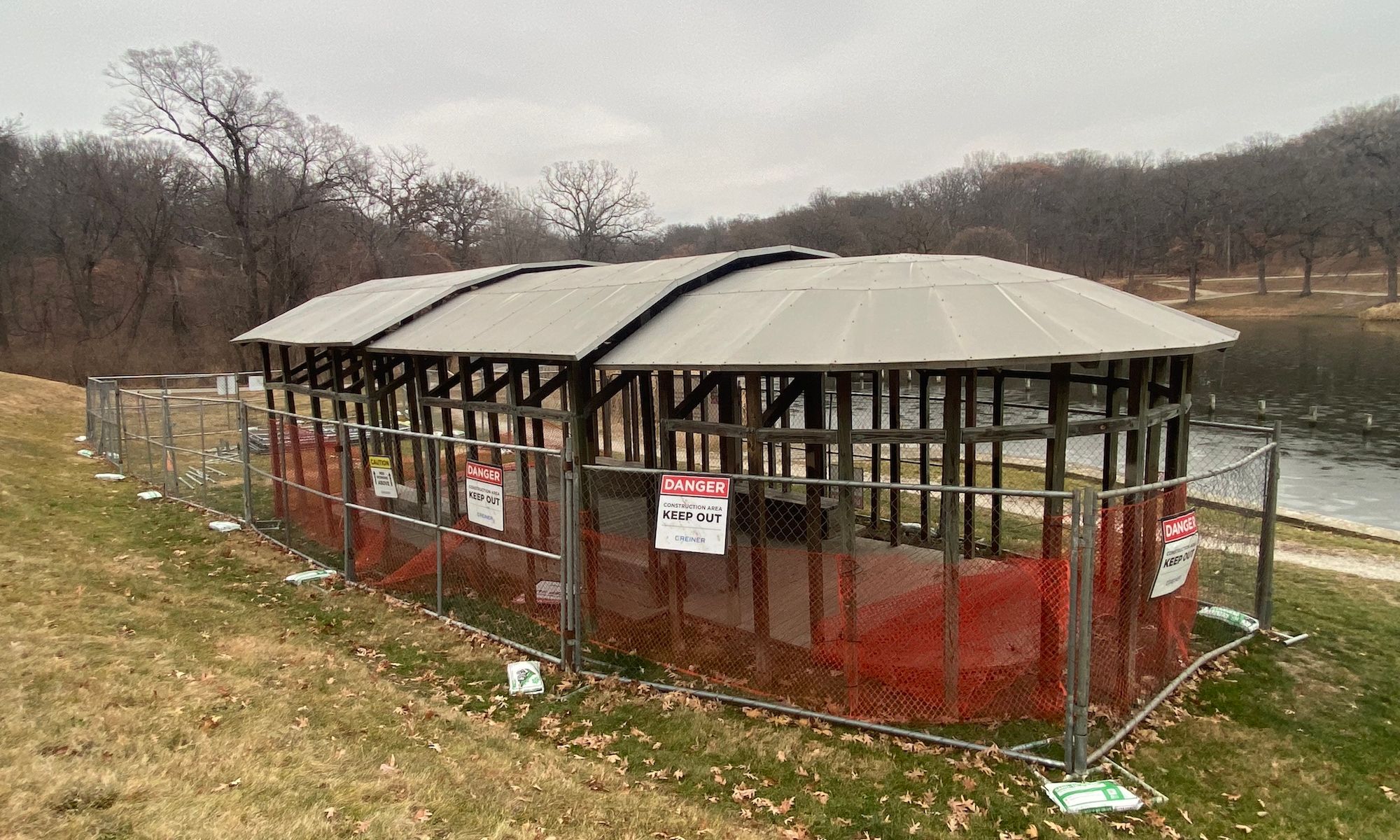Mary Miss, Greenwood Pond: Double Site (1996), Des Moines, Iowa, in December 2023 Courtesy The Cultural Landscape Foundation
The dispute over the fate of artist Mary Miss’s Land art environment in Des Moines, Iowa, is at a stalemate after a judge in the US District Court for the Southern District of Iowa, Stephen Locher, issued a preliminary injunction on Friday (3 May) blocking the Des Moines Art Center (DMAC) from demolishing the outdoor installation.
Judge Locher concurred with Miss’s claim that her contract with DMAC when it first commissioned Greenwood Pond: Double Site (1996) prevents the art centre from demolishing the work without her permission, which she has not given. However, the judge also found that the contract gives DMAC the right to refuse to repair the work if it judges the cost to be too high—the art centre has estimated the cost of repairing the restoring Miss’s work to be in excess of $2.6m, an estimate the artist has disputed.
In his order, Judge Locher writes that “neither side is entitled to what it wants”, with DMAC blocked from demolishing Greenwood Pond: Double Site and Miss unable to force the art centre to restore her work. “The end result is therefore an unsatisfying status quo: the artwork will remain standing (for now) despite being in a condition that no one likes but that the court cannot order anyone to change.”
In a statement, Miss welcomed the judge’s order. “I am grateful for Judge Locher’s ruling, and I hope this opens the door to the consultations about the future of the site that were denied me,” she said.
Mary Miss in her studio in New York this year Photo © Lila Barth
The ruling “held that the Des Moines Art Center cannot remove Greenwood Pond: Double Site, even the major areas that were declared unsalvageable and hazardous last fall, without the permission of Mary Miss”, a spokesperson for the art centre said in a statement. “The court also found that the Des Moines Art Center is not obligated to rebuild or renovate the work. We are exploring our options as to how to resolve what has become a court-ordered stalemate. In the meantime, we will retain the existing fencing around the dangerous sections of the site and will engage the City of Des Moines to address public safety in Greenwood Park.”
The work in question consists of a series of architectural and landscape interventions by Miss in and around a pond in Greenwood Park, a public park adjacent to the site of the Des Moines Art Center. It includes a curving footpath, a pagoda-like structure, a boardwalk that appears to descend into the water and a sunken space that allows visitors to descend to eye level with the surface of the pond.
The art centre estimates it has spent almost $1m maintaining the installation since its completion in 1996. Even so, parts of the installation have been deemed dangerous and fenced off from the public since last autumn. Just as demolition was to begin in early April, Miss sued the art centre and Judge Locher issued a temporary restraining order blocking the demolition. Miss, her supporters and representatives of the DMAC appeared in federal court in Des Moines for a hearing on the dispute on 18 April.
In his order, Judge Locher added that Miss’s claim that the integrity of Greenwood Pond: Double Site is protected under the Visual Artists Rights Act of 1990 (Vara) “has little chance of prevailing”, because it is not one of the types of art listed as protected in that legislation. Under Vara, works of art that are protected are defined as “painting, drawing, print or sculpture”, leaving outdoor Land art environments such as Miss’s apparently unprotected. “It is a stretch even to refer to [Greenwood Pond: Double Site’s] structures as sculptures in the metaphorical sense; they are surely not sculptures in the literal sense,” Judge Locher concludes.
In a statement, Charles A. Birnbaum, the president and chief executive of the Cultural Landscape Foundation, a non-profit based in Washington, DC, that has been campaigning for the preservation of Miss’s environment, said: “Though the court stated that the artwork is not really a sculpture and does not fall within the definition of ‘sculpture’ under Vara, we expect that expert testimony at trial—if it gets to that point—will establish that Land art is sculpture (e.g., Robert Smithson’s Spiral Jetty) and especially that this land art, Greenwood Pond: Double Site, was accessioned into DMAC’s permanent collection as a sculpture.”

